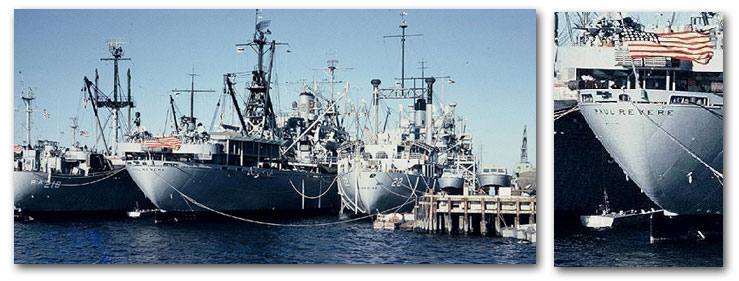Corpsman up! — Hospitalman Larry Skonetski in Vietnam (Part 2)
Larry was born 19 December 1945 in Streeter, Illinois and grew up in Dwight, Illinois. In August, 1963, when he was just 17 years old, he joined the U.S. Navy and was soon marching the parade ground as a recruit at Great Lakes Naval Training Center north of Chicago.

In high school, Larry had frequently volunteered at the U.S. Veterans Hospital in Dwight; in boot camp, the Navy correctly identified Larry as a good candidate for the Hospital Corps. He completed Hospital Corps School at Great Lakes Naval Hospital, and remained there for his first tour of duty. During that time, he made two decisions which changed the course of his life, and not necessarily for the better:
• Larry married a Navy Wave who was also in the Hospital Corps. She was from Silver City, New Mexico, coincidentally my own home town. Both would come to regret their marriage.
• A few months later, when life at the naval hospital was getting a bit dull, Larry volunteered for duty with the FMF — the Fleet Marine Force, the amphibious assault unit of the U.S. Navy. What he was really volunteering for, although he didn’t realize the full implications of his decision, was combat duty in Vietnam.
Today, Larry characterizes his younger self as a dumb kid who knew nothing at all about South Vietnam or its sworn enemy, North Vietnam. But he wasn’t alone: our commander-in-chief, President Johnson, and most of his closest advisors — not to mention several previous presidents and their advisors! — were equally clueless about Vietnamese politics and history.

Larry had soon completed Field Medical Service School at Camp Del Mar, a sub-camp of the Marine Corps’ Camp Pendleton in California, where navy corpsmen train for duty with the Fleet Marine Force and become, for all intents and purposes, U.S. Marines. Upon graduation, he was assigned to Lima Company, Third Battalion, First Marines — the “Thundering Third,” or “3/1”. That same summer, I also completed training at Field Medical Service School, sooner than scheduled — we were told that we were needed in Vietnam. I was assigned to 3/1’s Mike Company.
Both Larry and I got short leaves, and in August, 1965, 3/1 sailed from Long Beach on the U.S.S Magoffin (APA-199), an amphibious attack transport dating from the Second World War. We were headed for Okinawa; Larry had left behind not only his wife, but also a baby boy only a few weeks old.



At Camp Schwab in Okinawa, 3/1 trained — and trained, and trained, and trained, and then trained some more while our political masters in Washington debated what to do with us. By November, 1965, we apparently were deemed to be “combat ready” — I had deep reservations about that! — and we had an inspection by division brass. During the inspection, a general asked me if I was ready for Vietnam. “No, Sir!” I replied, truthfully. He ignored my answer and moved on.

It was around the time of the inspection that we had a wake-up call: Camp Schwab became the temporary post of a group of 17-year-old Marines fresh from Vietnam. Scuttlebutt said that one of their parents had complained to Congressmen, and the Pentagon subsequently ordered the 17-year-olds to leave Vietnam.
Leaving aside the legality of whether they should have been in combat, it was clear that sending them to Vietnam was a mistake that wasn’t undone by taking them out of combat and away from their buddies who were still in the thick of battle (and the Marine Corps units already in Vietnam had had a very rough time). The “repatriated” 17-year-olds were still armed, they were angry, and they had access to alcohol and drugs. Their barracks were right next to battalion sick bay where I was working; I don’t recall any specific incidents, but I do recall recognizing that those young men had been seriously traumatized by their experiences in Vietnam. And now we were headed there ourselves.
Finally, in mid-January, 1966, 3/1 embarked on U.S.S. Paul Revere (APA-248), a more-modern attack transport than Magoffin. (In 1963, when I was on weekend liberty during my training at the Hospital Corps School at Balboa Naval Hospital in San Diego, I photographed Paul Revere but hadn’t noticed the ship’s name on the stern. Not until 1999, when I looked at a high-resolution scanned image of the original slide, did I realize the ship was the Paul Revere.)
